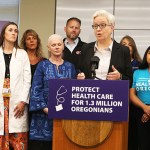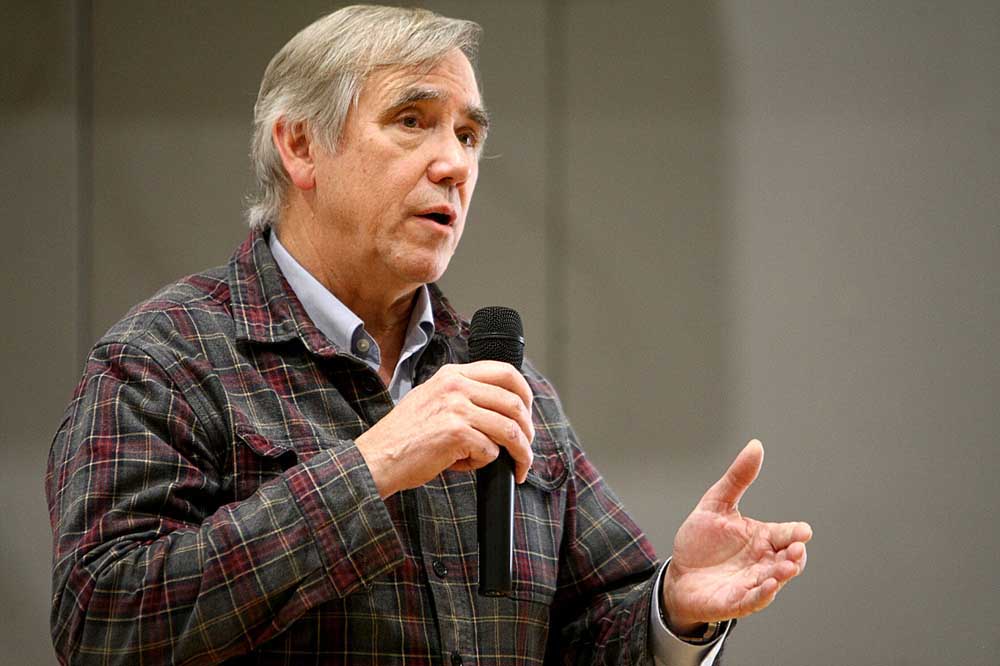In Bend visit, Kotek says Medicaid cuts would hurt Oregon’s economy
Published 4:52 pm Wednesday, June 18, 2025

- Oregon Governor Tina Kotek guides a discussion about medicaid cuts, at Mosaic Medical Conners Health Center in Bend Wednesday afternoon. 6-18-25 Andy Tullis/The Bulletin
Rural Oregon medical professionals told Gov. Tina Kotek on Wednesday that cuts to food and Medicaid programs would hurt more than just those that use the service.
Hospitals might have to cut programs to make up for the loss of income. Physicians might have to cut hours because patients who were on Medicaid won’t have any insurance. And patients may have to drive longer distances to get services.

Oregon Gov. Tina Kotek initiates a discussion about medicaid cuts, at Mosaic Medical Conners Health Center in Bend Wednesday afternoon. Andy Tullis/The Bulletin
“The economic impact of this goes beyond just patients,” Kotek said following a roundtable discussion in Bend on Wednesday. “Our health care providers are employers. When someone wants to start a business, they want to know if there’s health care in that community, particularly in rural and frontier areas.”
Kotek said she came to Central Oregon because its in the district of U.S. Rep Cliff Bentz R-Ontario. Bentz represents nearly two-thirds of the state including Crook County and portions of Deschutes and Jefferson counties.
Per capita, Bentz’s district sees the largest percentage of use for both food assistance and Oregon Health Plan.
Congress is considering a measure that would impose restrictions on Medicaid coverage and reduce so-called food stamp programs. One of the restrictions would be to add a requirement for adults with children over the age of 14 to work or volunteer at least 80 hours a month.
Caregivers who receive Medicaid benefits are already working, if they have the time and coverage for the family member they care for, Kotek said.
An estimated 5.2 million Americans could lose health coverage by the end of the decade, according to the Congressional Budget Office, if the cuts go into effect.

Oregon Governor Tina Kotek guides a discussion about medicaid cuts, at Mosaic Medical Conners Health Center in Bend Wednesday afternoon. Andy Tullis/The Bulletin
Trending
In Oregon, if the bill passes, as many as 200,000 Oregonians could lose their current coverage. That would result in up to $1.4 billion a year less in federal funding to support Medicaid, according to a statement by Kotek.
“More often than not, if you live in rural Oregon, it means traveling 30 miles or more to get your health care needs met,” said Kotek in a prepared statement. “Cuts to Medicaid and SNAP (Supplemental Nutrition Assistance Program ) threaten hospitals, clinics, medical offices and services Oregonians depend on.”
States pay half the cost of managing the food program and the federal government pays the rest, Kotek said. Under the bill, states would be required to pick up a larger share of the administrative costs and pay for a portion of the cost of the food benefits that helps people with low income through vouchers to buy food. Right now the food benefits are paid for solely by the federal government.
Megan Haase, Mosaic Community Health CEO, said Wednesday that half of the federally qualified health center’s 34,000 patients rely on the Oregon Health Plan, which is the state’s Medicaid program.
“Without Medicaid many would be forced to avoid or delay medical care,” Haase said. “I’m deeply concerned about the proposed cuts to Medicaid.”
A physician in Burns, a two hour drive to Bend, predicted patients without regular care will see their health decline and wind up spending more time in a hospital at a greater cost to the facility and taxpayers.
“Medicaid cuts will take us further, not closer to maintaining healthier communities,” said Haase.
Kotek said the proposed cuts to Medicaid make her angry because in Oregon, it would affect about a million residents who are on the program.
“The cuts are so unnecessary,” Kotek said. “The cost of living is so present in people’s minds, the cost of food, the cost of health care. This is not the time to cut. It’s the time to invest.”






